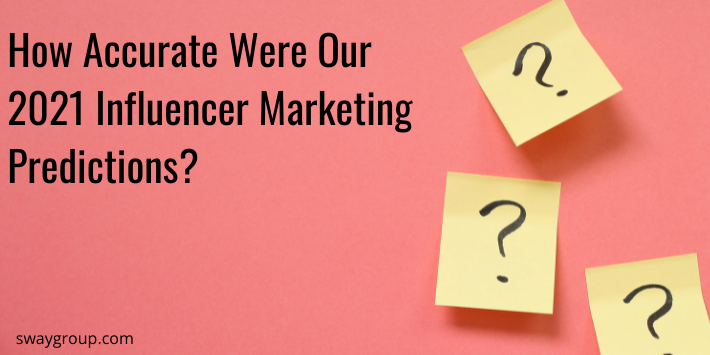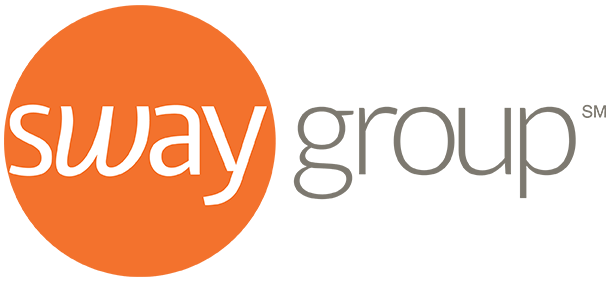As you can see if you take a peek at our company values, we’re all about accountability here at Sway Group. We prioritize accountability to each other, our clients, our influencers, and our industry as a whole — which includes reviewing our best guesses for how influencer marketing will evolve.
About a year ago we did our best to predict the future … and we did the same this year. As 2022 kicks off and we have a new set of predictions to share, let’s see if our 2021 influencer marketing predictions came true.
 Sway Group’s 2021 Predictions for Influencer Marketing
Sway Group’s 2021 Predictions for Influencer Marketing
1) Influencer Marketing Terminology Is in Flux. We guessed that “influencer” as the go-to term would start being replaced by “creator,” and this has definitely been happening. Notably, TikTok refers to users as creators and even launched a Creator Marketplace for brand/creator collaborations. Similarly, Facebook’s service for managing and monetizing content is called Creator Studio.
2) Paid Amplification for Influencer Marketing Will Be Critical. This prediction is all about using paid media to promote influencer marketing content, a tactic which has become increasingly important in recent years. While ever-changing platform algorithms can make it difficult for brands to get sufficient organic reach with their influencer marketing, paid media ensures that great content gets seen.
3) Short-Form Video Will Continue to Skyrocket. We admit it, this was a pretty easy prediction. You only have to look at TikTok’s soaring popularity (TikTok recently replaced Google as the most popular destination on the Internet) — and ability to drive consumer interest in products — to see how short-form video dominated in 2021, and will continue to rise in 2022.
4) “Social Commerce” Features Will Boost Sponsorship Performance. In 2020, we guessed that “Shoppable posts and videos, seamless transitions from influencer content to brand-owned channels, deeper integrations between platforms and e-commerce solutions/storefronts — all of these trends will be on the rise in 2021.”
In fact, 2021 led to an even bigger need for these solutions as COVID-19 uncertainties and supply chain issues continued to impact the retail industry. Interestingly, a recent Accenture study predicts that the $492 billion global social commerce industry is expected to grow three times as fast as traditional ecommerce — to $1.2 trillion by 2025.
5) Authenticity Is Key for Generation Z. We were right about this one — but we should have expanded it beyond Gen Z, because 2021 saw a great shift towards authenticity among all consumers. One survey shows that brand reputation, personalization, and brand loyalty all increased in importance from 2020 to 2021.
6) Brands Should Take a Stand (Then Back It Up with Action). The great upswelling of social justice activism in 2020 led us to predict that consumers would be looking to brands to take a stand in 2021. This one is relatively easy to prove, there is no shortage of studies that show that today’s consumers expect brands to support the social causes that matter to them. There are consequences for trying to avoid potential controversy, too: 59% of Americans say it is no longer acceptable for companies to be silent on social justice issues and a further 49% say they assume companies that remain quiet on social justice issues don’t care.
While we were making our 2021 guesses during a very uncertain time in history (not that it’s much better here in January of 2022, unfortunately), we feel pretty good about how these predictions panned out. Take a look at what we believe will be the red-hot trends for influencer marketing in 2022, and let us know what you think!
